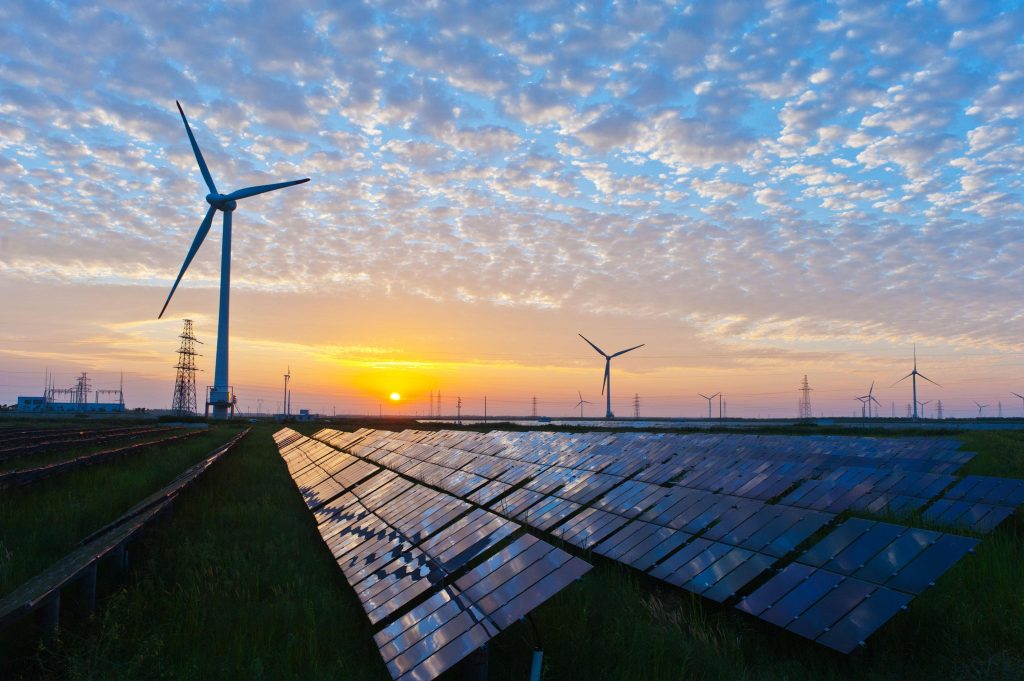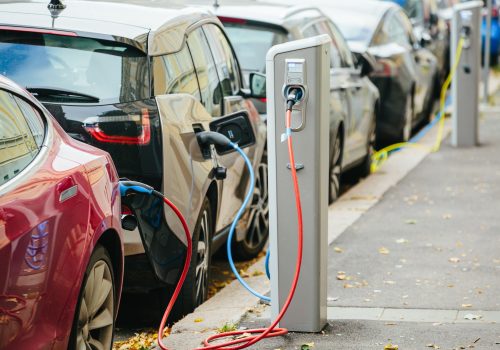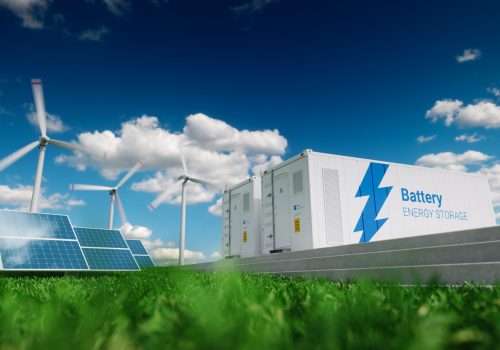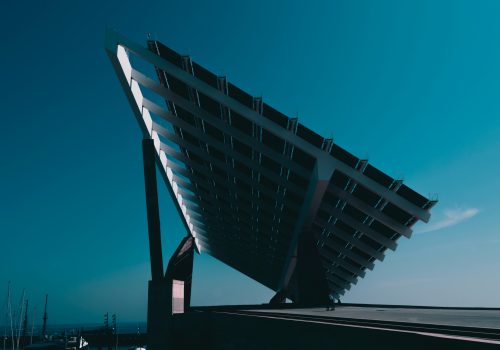This is part of an essay series on the mutual challenges posed by climate change and opportunities presented by the energy transition that the Gulf Cooperation Council (GCC) and Turkey share.
The eastern Mediterranean and the Arabian Peninsula share sunny skies and unique geopolitical locations. Their largest economic powerhouses, the Gulf Cooperation Council (GCC) and Turkey, share progressive plans to decarbonize their economies by the middle of the century. However, their energy-transition pathways are propelled by distinct forces.
As Turkey’s appetite for energy rapidly grew, its reliance on imported natural gas left it critically vulnerable to supply shocks, price volatility, and geopolitical pressures. Thus, Ankara views investing in renewables, nuclear power, and hydrogen as crucial to enhancing its energy security. In contrast, the hydrocarbon-exporting Gulf nations are seeking to future-proof their economies in a decarbonizing world by proactively diversifying into solar, wind, and hydrogen production. While their motivations differ, Turkey and the GCC both understand that their energy systems must evolve for economic reasons.
Securing supply through diversification
Turkey’s energy demand has increased in recent decades due to population growth, industrialization, economic development, and rising living standards. This has made it heavily reliant on imported fossil fuels, especially natural gas, which has a roughly 30-percent share in its energy mix. To enhance energy security and meet rising electricity demand, it has focused on diversifying its power-generation portfolio.
Hydroelectric dams have long been Turkey’s main renewable-electricity source. But installed capacity of solar and wind power expanded rapidly since 2014, more than doubling renewables’ share of total generation to 42 percent by 2022. Turkey’s mountainous geography provides substantial potential for additional hydropower, while its western and southern regions have favorable wind and solar resources.
Under its 2053 net-zero emissions pledge, Turkey aims to double electricity capacity by 2035, with renewables providing nearly 65 percent of power. Wind and solar capacity are slated to scale up dramatically. Turkey has strong project pipelines, with wind projects largely on track. However, solar growth has lagged targets so far. Beyond renewables, nuclear power from new plants will provide 11 percent of Turkey’s electricity by 2035.
While pushing renewables, Turkey seeks greater fossil-fuel production and supply diversification to ensure energy security during the transition period. Turkey is planning expansion of its coal and gas electricity-generation capacity by 3 and 10 gigawatts (GW), respectively, but both are expected to fall after 2030. Expanding natural-gas exploration resulted in major discoveries in the Black Sea, which could provide up to 30 percent of Turkey’s gas demand. But regional disputes have hindered Turkey’s ambitions to become an Eastern Mediterranean gas hub.
Alongside its renewable-energy plans, Turkey also plans major deployment of battery storage and green-hydrogen production to provide grid flexibility. Hydrogen output could reach 0.75 million tons annually by 2035 and 10.5 million tons annually by 2053, most of which would be available for export to Europe. Blending hydrogen into gas networks is also envisioned.
Preparing for a post-oil era in the Gulf
Like Turkey, the GCC states have witnessed substantial energy-demand growth in recent decades, driven by population growth and rising living standards. This rising domestic demand initially increased reliance on oil and gas before GCC states took measures to manage demand, diversify their energy mix, and free up more oil and gas for export.
Solar-power capacity has expanded rapidly in Saudi Arabia, Qatar, Oman, and the United Arab Emirates (UAE), where it now represents 8 percent of electricity generation. Under its 2060 net-zero pledge, Saudi Arabia aims to add 59 GW of solar and wind capacity by 2030 and source 50 percent of its electricity from renewables. The UAE has similarly ambitious targets, aiming for 30-percent clean power by 2031, which includes both renewables and nuclear power. The UAE is the only GCC country with a functional nuclear plant.
While adding renewables, the GCC still seeks to maximize oil and gas output for export. The bloc is expanding upstream investments to increase capacity. Saudi Aramco and UAE’s ADNOC, the national oil companies, are planning massive oil and gas investments. Meanwhile, Qatar’s North Field expansion will significantly boost its natural-gas exports.
Capitalizing on their energy expertise and cheap solar energy, GCC states are also well positioned to enter the low-carbon hydrogen market. This includes production of both green hydrogen from renewable sources and blue hydrogen from natural gas with carbon capture. With most of the planned production slated for export, the GCC aims to meet growing global demand for hydrogen in hard-to-decarbonize sectors.
The UAE, which delivered the region’s first hydrogen shipment to Germany, has set a goal of becoming a leading global producer of green and blue hydrogen by 2031. It plans to capture 25 percent of global trade with production of 1.4 million tons annually, rising to 15 million tons by 2050. Saudi Arabia is building the world’s largest green-hydrogen plant at NEOM, targeting 2.9 million tons by 2030 and 4 million tons by 2035. Similarly, Oman aims to produce at least 1 million tons of green hydrogen by 2030 and up to 8.5 million tons by 2050.
Turning geopolitical challenges into energy collaboration
Though their motivations for energy transition differ, Turkey and the GCC still have much to gain from collaboration that plays to their respective strengths. In solar power, Turkey could benefit from the GCC nations’ extensive expertise from developing mega-scale projects in the Gulf’s sun-drenched deserts. Investments in Turkey by GCC companies, such as the UAE’s Masdar and Saudi Arabia’s ACWA Power could leverage the GCC’s financing and experience, while helping Ankara scale up photovoltaics rapidly. The GCC region could also benefit from Turkey’s wind-power expertise, as was demonstrated in Masdar’s attempts to purchase Turkish renewable-energy company Fiba.
Connecting the electricity grids between the GCC and Turkey would also help manage supply and demand fluctuations from renewable sources. Saudi Arabia already plans to link its grid with Iraq’s, which could potentially be expanded to Turkey.
For both sides, joint development of green-hydrogen production facilities offers substantial synergies. With plentiful wind resources and local industries that can be powered by green hydrogen, Turkey could learn from the Emirati, Saudi, and Omani green-hydrogen experiences and benefit from their investments. The GCC, in turn, could benefit from lower transportation costs for consumers and possible pipeline connectivity to the European hydrogen backbone. Channeling complementary strengths, such partnerships could help unlock their ambitions to be major hydrogen suppliers to Europe.
Turkey also has much to gain from the GCC’s know-how in nuclear energy as it powers up the Akkuyu plant, which is operated by Russia’s Rosatom. The UAE’s Barakah project, the first Arab nuclear-power station, could provide a model for future reactors in Turkey.
While Eastern Mediterranean natural-gas collaboration faces geopolitical complexities, increased Qatari exports via the North Field expansion would benefit Turkey. Importing oil from the GCC countries could also help reduce Turkey’s dependence on Russia, and diversify and create new markets for expanded GCC production capacity.
Finally, technical partnerships in renewable-energy research and development (R&D) between GCC and Turkish universities and companies would further strengthen these emerging energy ties. Planned research centers, such as the UAE’s green-hydrogen R&D center, could present a basis for technical collaboration.
As Turkey and the GCC charge ahead with their respective energy transitions, it is clear they have much to gain from increased collaboration. By combining their unique expertise and resources, they can unlock greater energy security and sustainability. Such cooperation demonstrates the potential for these regions to fully incorporate energy in their economic partnership in pursuit of a better future for all.
Karim Elgendy is an urban sustainability and climate expert based in London. He is an associate director at Buro Happold, an associate fellow at Chatham House, and a nonresident scholar at the Middle East Institute in Washington. Elgendy is also the founder and coordinator of Carboun, an advocacy initiative promoting sustainability in cities of the Middle East and North Africa through research and communication.
Further reading
Fri, Dec 8, 2023
EV adoption could drive collaboration for renewable energy in Turkey and GCC
Report By
Turkey and the GCC have ambitious environmental targets. Here is how a collaboration on renewable energy and EV adoption can help with achieving those targets.
Fri, Dec 8, 2023
How GCC and Turkey can go together toward a sustainable future
Report By Eser Özdil
While Turkey has ambitious green-energy transition strategies and projects, they need to cooperate with the GCC to overcome the financial and capacity challenges.
Fri, Dec 8, 2023
Forging a collaborative energy transition between GCC and Turkey
Report By
Turkey and the GCC cannot self-achieve energy transition. Nations need to plan how to join forces for diversifying energy sources and reducing carbon footprints in the region.
Image:
from PxHere




Follow the conversation on X, formerly known as Twitter, with @AC_Istanbul and @AtlanticCouncil using #ACTurkey and #ACatCOP28